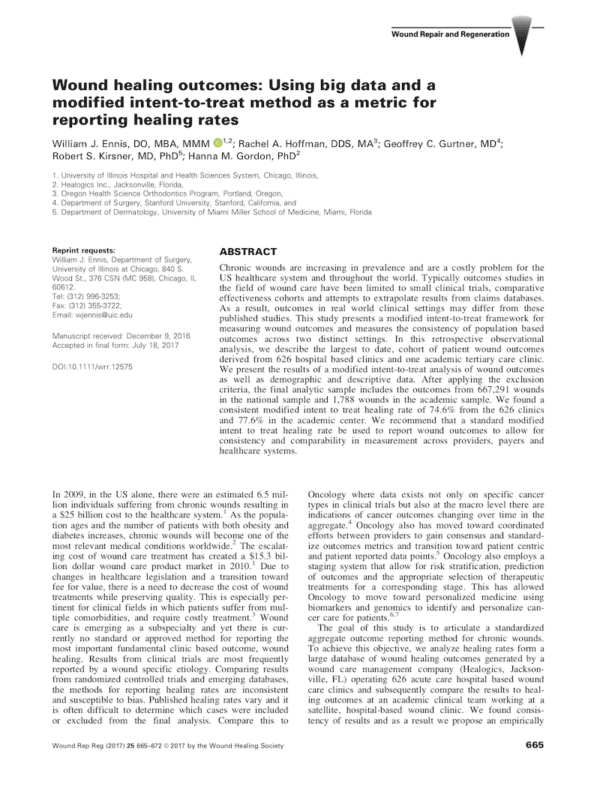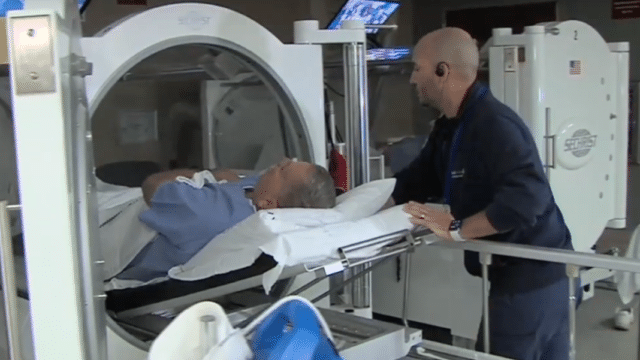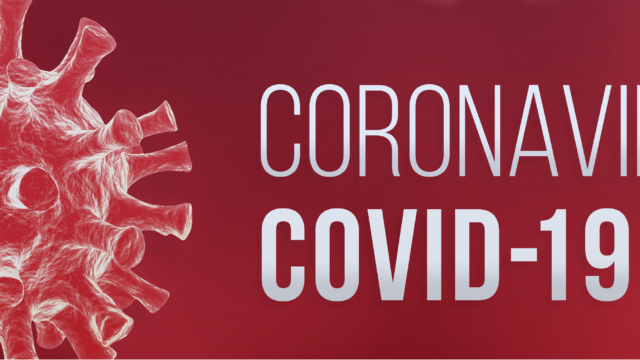Wound healing outcomes: Using big data and a modified intent-to-treat method as a metric for reporting healing rates
Chronic wounds are increasing in prevalence and are a costly problem for the US healthcare system and throughout the world. Typically outcomes studies in the field of wound care have been limited to small clinical trials, comparative effectiveness cohorts and attempts to extrapolate results from claims databases. As a result, outcomes in real world clinical settings may differ from these published studies. This study presents a modified intent-to-treat framework for measuring wound outcomes and measures the consistency of population based outcomes across two distinct settings. In this retrospective observational analysis, we describe the largest to date, cohort of patient wound outcomes derived from 626 hospital based clinics and one academic tertiary care clinic. We present the results of a modified intent-to-treat analysis of wound outcomes as well as demographic and descriptive data. After applying the exclusion criteria, the final analytic sample includes the outcomes from 667,291 wounds in the national sample and 1,788 wounds in the academic sample. We found a consistent modified intent to treat healing rate of 74.6% from the 626 clinics and 77.6% in the academic center. We recommend that a standard modified intent to treat healing rate be used to report wound outcomes to allow for consistency and comparability in measurement across providers, payers and healthcare systems.




